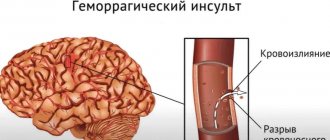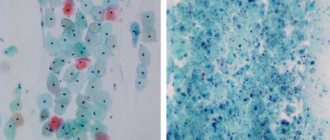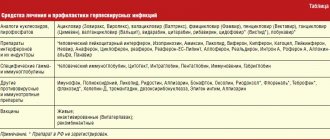What is Still's disease?
Still's disease is considered a rare and serious disease. Arthritis is characterized by joint pain,
but in this case, the patient has a sore throat, body temperature rises and an orange-pink rash appears on the skin. To recognize the disease, doctors conduct laboratory tests and check the lymphoreticular and cardiopulmonary systems. Particular attention is paid to the joints. Therapy includes taking nonsteroidal drugs that relieve inflammation, glucocorticosteroids, and cytostatics. Timely assistance eliminates the development of complications. But first, patients must understand that they are dealing with Still's disease.
How to recognize the disease?
If an adult gets sick with a rare type of arthritis, he notices the following changes in the body:
- Sore throat. The cervical lymph nodes become swollen and inflamed, touching them becomes painful.
- Body temperature rises. The indicator reaches its maximum in the morning and evening.
- Skin rashes. An orange-pink rash appears on the arms, legs and body. This is a consequence of high body temperature.
- Joints hurt, swell, become inflamed. A person feels stiffness in the elbows, knees, and shoulders.
- Muscle discomfort appears. This is caused by high temperature.
- Lymphadenopathy and hepatosplenomegaly develop. Illnesses appear in 70% of patients with Still's disease.
What complications should you be wary of?
The situation is complicated by the fact that over time, inflammation of the joints and organs becomes chronic. Other complications include:
- Joint syndrome. The knee and wrist joints are destroyed.
- Inflammation of the heart muscle. Myocarditis and pericarditis develop.
- Accumulation of fluid in the lungs. Taking deep breaths becomes difficult.
Why does the disease appear?
The etiology of the disease is not fully understood. Many doctors believe that Still's disease is infectious in nature. Associations arise with parainfluenza, rubella virus, and mycoplasma. Pathogenic microbes are one of the causes of the development of the disease. The other is hereditary predisposition. Still's disease is also classified as an autoimmune disease.
How to diagnose a rare type of arthritis?
Examination of the patient is the task of the rheumatologist. The doctor monitors the patient’s condition and rules out diseases with similar symptoms. Blood donation is required. Biochemical and clinical analysis is carried out in laboratory conditions. The deformed joint can be seen on x-ray. Sometimes a lymph node biopsy is performed. If heart problems occur, the patient should consult a pulmonologist and cardiologist. In addition to X-rays of the lungs, an ECG and ultrasound will be prescribed.
How to cure Still's disease?
Medicines will help cope with the disease. To stop pathological changes, it is necessary to take non-steroidal anti-inflammatory drugs. In a quarter of cases, this is enough to stop further exacerbation. If the disease affects the cardiopulmonary system, glucocorticoids are prescribed. A rare type of arthritis is considered an autoimmune disease, so the doctor prescribes immunostimulants. Other medications suitable for treatment:
- Interferon;
- Sulfanilamide;
- Gold preparations;
- Cytostatics;
- Cyclosporine A;
- Means for systemic enzyme therapy;
- Aminoquinoline drugs.
In case of severe liver damage, hepatoprotectors are prescribed. In advanced cases (with unbearable pain), patients are injected with glucocorticoids into the joint cavity. Protease inhibitors are sometimes used. Treatment is also carried out at the local level: the doctor prescribes gels and ointments against inflammation, and prescribes physical therapy. An additional treatment method is plasmapheresis.
What are the chances of recovery?
A third of patients cope with the disease within nine months, sometimes earlier.
The remaining patients suffer from periodic exacerbations and risk developing a chronic form of Still's disease. Death is possible only in the presence of secondary infections. Author: K.M.N., Academician of the Russian Academy of Medical Sciences M.A. Bobyr
School of Rheumatology
“When we talk about rare diseases, issues of differential diagnosis always come to the fore, because it is often extremely difficult to give the patient the correct diagnosis during the initial examination,” notes Professor, Director of the Federal State Budgetary Institution NIIR. V. A. Nasonova, Doctor of Medical Sciences Alexander Lila.
The expert explains that such care can only be provided to patients in an institution with a multidisciplinary team, where there are all the capabilities to carry out diagnostics and provide high-tech medical care within the same walls.
“If we talk about the Russian Federation as a whole, then specialists from the regions are often in dire need of advice to determine the algorithm for managing patients with Still’s disease. It will now be easier to obtain it thanks to the opening of a reference center for autoinflammatory diseases on the website of our institution,” says Lila. “Now a doctor of any specialty can receive correspondence consultation from federal experts if EFS is suspected in patients over 18 years of age.”
Recommendations
- ^ a b c d e
Akkara Veetil BM, Yee AH, Warrington KJ, Aksamit AJ Jr, Mason TG.
(December 2012). "Aseptic meningitis in Still's disease in adults." Rheumatol Int
.
32
(12):4031–4. Doi:10.1007/s00296-010-1529-8. PMID 20495923. S2CID 19431424. - ^ a b
Colafrancesco, Serena;
Priori, Roberta; Alessandri, Cristiano; Perricone, Carlo; Pendolino, Monica; Picarelli, Giovanna; Valesini, Guido (2012). "Serum IL-18 levels in adults with onset of Still's disease: a marker of disease activity." International Journal of Inflammation
.
2012
: 1–6. doi:10.1155/2012/156890. PMC 3385601. PMID 22762008. - ^ a b
Gerfaut-Valentin, Mathieu;
Jamillou, Ivan; Ivaz, Jean; Seve, Pascal (July 2014). "Adult-onset Still's disease." Reviews about autoimmunity
.
13
(7): 708–722. Doi:10.1016/j.autrev.2014.01.058. ISSN 1873-0183. PMID 24657513. - Fauter, M.; Gerfaut-Valentin, M.; Delplanque, M.; Georgin-Lavialle, S.; Sève, P.; Jamillou, Y. (01/07/2020). "[Complications of Still's disease in adults]". La Revue de Médecine Interne
.
41
(3): 168–179. Doi:10.1016/j.revmed.2019.12.003. ISSN 1768-3122. PMID 31924392. - Mitrovic, Stefan; Foutrel, Bruno (2018). "Complications of Still's disease in adults and their treatment." Review of Clinical Immunology
.
14
(5): 351–365. Doi:10.1080/1744666X.2018.1465821. ISSN 1744-8409. PMID 29658384. S2CID 4895740. - Neel, Antoine; Wahbi, Anais; Tessulin, Benoit; Boileau, Julien; Carpentier, Dorothy; Deco, Olivier; Fardet, Lawrence; Geri, Guillaume; Godmer, Pascal; Goujar, Cecile; Maisonneuve, Herve (04/11/2018). "Diagnosis and treatment of life-threatening chronic disease in adults: a multicenter study in France and a systematic review of the literature." Critical Care (London, England)
.
22
(1): 88. doi:10.1186/s13054-018-2012-2. ISSN 1466-609X. PMC 5896069. PMID 29642928. - Sugiura, T; Kawaguchi, Y; Harigai, M. Terajima-Ichida, H; Kitamura, Y; Furuya, T; Ichikawa, N. Kotake, S; Tanaka, M; Hara, M; Kamatani, N. (November 2002). "The association between adult Still's disease and interleukin-18 gene polymorphisms." Genes and immunity
.
3
(7): 394–9. doi:10.1038/sj.gene.6363922. PMID 12424620. - Jamilloux, Y; Gerfaut-Valentin, M; Martinon, F; Belo, A; Henry, T. Seve, P. (February 2015). "Pathogenesis of adult Still's disease: new insights from its juvenile counterpart". Immunological research
.
61
(1–2): 53–62. Doi:10.1007/s12026-014-8561-9. PMID 25388963. S2CID 44588159. - Efthimiou P, Konzias A, Ward KM, Ogden NS. (June 2007). "Adult-onset Still's disease: could recent advances in understanding its pathogenesis lead to targeted therapy?" Nat Clean Pract Rheumatol
.
3
(6): 328–35. Doi:10.1038/ncprheum0510. PMID 17538564. S2CID 30465113. - Yamaguchi M., Ohta A., Tsunematsu T., Kasukawa R., Mizushima Y., Kashiwagi H., Kashiwazaki S., Tanimoto K., Matsumoto Y., Ota T. (1992). "Preliminary criteria for the classification of adult Still's disease". J. Rheumatol. 19
(3): 424–30. PMID 1578458. - Kush, J.J.; Medsger TA Jr; Christy, toilet; Herbert, D.C.; Cooperstein, Los Angeles (February 1987). “Adult-onset Still's disease. Clinical course and outcome." Arthritis and rheumatism
.
30
(2): 186–194. Doi:10.1002 / art.1780300209. PMID 3827959. - Jamilloux, Y; Gerfaut-Valentin, M; Henry, T. Seve, P. (22 December 2014). "Treatment of Still's disease in adults: a review." Therapy and clinical risk management
.
11
: 33–43. Doi:10.2147/TCRM.S64951. PMC 4278737. PMID 25653531. - Wester, Sebastian J.; Jamillou, Ivan; Quartier, Pierre; Ohlman, Sven; Osterling Koskinen, Lisa; Kullenberg, Torbjorn; Frank-Larsson, Karin; Foutrel, Bruno; de Benedetti, Fabrizio (November 1, 2021). "Anakinra in children and adults with Still's disease." Rheumatology (Oxford, England)
.
58
(Appendix_6): vi9 – vi22. Doi:10.1093/rheumatology/kez350. ISSN 1462-0332. PMC 6878842. PMID 31769856. - Nordström D; Knight A; Luukkainen R; van Vollenhoven R; and others. (October 2012). “The beneficial effect of interleukin 1 inhibition by anakinra in Still's disease in adults. Open randomized multicenter study." J. Rheumatol. 39
(10):2008–11. Doi:10.3899/jrheum.111549. PMID 22859346. S2CID 207614974. - Commissioner, Office (2020-06-16). "FDA Approves First Course of Treatment for Adult Chronic Disease, Serious and Rare Disease." FDA
. Received 2020-06-21. - Cecilia Giampietro; Bruno Fautrel (2012). "Review article: Anti-interleukin-1 agents in chronic disease in adults." International Journal of Inflammation
.
2012
(317820): 317820. doi:10.1155/2012/317820. PMC 3350963. PMID 22611515. - Al-Homud, I. A. (01/01/2014). "Biological treatments for Still's disease in adults." Rheumatology
.
53
(1): 32–38. Doi:10.1093/rheumatology/ket250. ISSN 1462-0324. PMID 23864171. - Lüthi F., Zufferi P., Hofer M.F., So A.K. (2002). "Adolescent-onset Still's disease: characteristics and outcomes compared with adult-onset Still's disease." Clin.
Exp. Rheumatol .
20
(3): 427–30. PMID 12102485. - Jamilloux, Y.; Georgin-Lavialle, S.; Sève, P.; Belot, A.; Foutrel, B. (2019). "[It's time to reconcile systemic juvenile idiopathic arthritis and adult-onset Still's disease]." La Revue de Médecine Interne
.
40
(10): 635–636. doi:10.1016/j.revmed.2019.06.001. ISSN 1768-3122. PMID 31221454. - Ouliya M.B., Mehrpour G. (2009). "Adult Still's Disease: A Review" (PDF). Indian J Med Sci
.
63
(5): 207–21. Doi:10.4103/0019-5359.53169. PMID 19584494. - sind / 1773
in Who named it? - G. F. Still. A special form of joint disease occurs in children. Doctoral dissertation, Cambridge, 1896.
- Kopech-Mendrek, Magdalena; Widuchowska, Małgorzata; Kucharz, Eugeniusz J. (2016). "Calprotectin in rheumatic diseases: a review." Reumatologia
.
54
(6):306–309. Doi:10.5114/reum.2016.64907. ISSN 0034-6233. PMC 5241367. PMID 28115781.
Care
Still's disease in adults is treated with anti-inflammatory drugs. Steroids such as prednisone are used to treat severe Still's symptoms. Other commonly used medications include: hydroxychloroquine, penicillamine, azathioprine, methotrexate, etanercept, Anakinra, tocilizumab cyclophosphamide, adalimumab, rituximab, and infliximab.[12]
New drugs target interleukin-1 (IL-1), especially IL-1β.[13] A randomized multicenter trial found better results in a group of 12 patients treated with anakinra than in a group of 10 patients treated with other disease-modifying antirheumatic drugs.[14] In June 2021, the FDA approved Ilaris (canakinumab) for the treatment of AOSD, the first FDA-approved treatment for AOSD.[15] Canakinumab is another anti-IL1 drug that selectively binds IL-1β and rilonacept, which blocks both IL-1A and IL-1β.[16] The anti-IL6 monoclonal antibody tocilizumab is another treatment option that is as effective as anakinra.[17]
The condition "juvenile-onset Still's disease" is now commonly grouped under juvenile rheumatoid arthritis. However, there is some evidence that the two conditions are closely related.[18][19]





